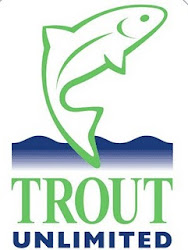In my university courses, I often ask students to look critically at writing–to consider that the strength of traditions based upon writing depends upon people reading their culture’s texts. And I point out to students that our libraries are filled with books that are never touched. Academic books that go unread are typically books that deal with obtuse, unimportant topics. Books written for popular audiences that go unread are often books that are simply written poorly. Of course, these are the often same reasons that certain journals, magazines, and websites go unread as well.
Personally, I only subscribe to one magazine: The Flyfish Journal. The articles published therein are generally interesting and very well-written. I also receive Trout magazine, as part of my membership in the conservation organization, Trout Unlimited. However, in the past, I did not look at the articles in Trout very carefully. There were even times when I put the magazine directly into the recycling bin without getting past the contents page. It was not a magazine to which I would have chosen to subscribe. Fortunately, this has changed. The current editorial staff members–Kirk Deeter, Samantha Carmichael, and Erin Block–have made some great decisions about what to publish (and it is great to see their work, too, especially the very talented Erin’s) .
I was particularly happy that I looked through the latest issue of Trout more carefully than I looked at previous editions. In the Summer 2014 issue, I found articles by two close fly fishing friends. “Bad Boyfriend”, by Mike Sepelak, is an immensely creative, metaphorical essay about the dangers of introducing others to the disease we call fly fishing. In my opinion, Mike is a truly gifted writer, and I am very happy each time I see a new piece of his in print. It does not seem that long ago that he was telling me about the writing class he had just enrolled in at our town’s community college. Now, he could probably teach that class. “A Fly-Fishing Pilgrimage to Montana,” by Rabbi Eric Eisenkramer, is an autobiographical essay, in which Eric relates the reasons behind his visit to the Big Blackfoot River and other Montana haunts of writer Norman Maclean. As someone with a Ph.D. in Religious Studies, Eric’s reflections upon the deeper meanings that many of us–past and present–ascribe to fly fishing have long intrigued me. Some years ago, I invited him to speak to my students, in a college course on fishing literature. In turn, he invited me to speak to his congregation. Of course, we have also fished together. So, I enjoy his company as much in person as I do in print.
Mike and Eric are two angling writers who should be read. Their unique perspectives upon fly fishing and the reasons we fish, as well as their writing skills, place them among those authors whose works should not simply gather dust on a shelf. Indeed, their works serve to strengthen the traditions associated with fly fishing, one of which is writing itself.


















